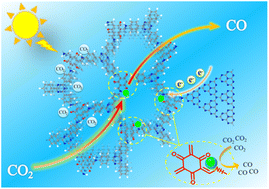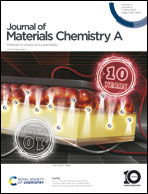Highly dispersed Co-modified covalent organic frameworks as bridging cocatalysts for boosting CO2 photoreduction over defective carbon nitride†
Abstract
It is still a great challenge to increase both the active sites and charge separation of earth-abundant catalysts for efficient and durable photocatalytic CO2 conversion. To achieve these aims, we designed imine-linked covalent organic frameworks as the electron bridge that links the photocatalyst and robust metal active sites for photocatalytic CO2 reduction. When integrated with defective g-C3N4, the composite generated 37.3 μmol h−1 of CO with 98.8% selectivity over H2 evolution under visible light irradiation, which greatly outperformed other non-noble metal species as cocatalysts. Experimental and theoretical results demonstrated that the stabilized Co ions with a six-membered chelating structure effectively improved the collection of excited electrons and stability of the catalyst. This study provides a new protocol to improve CO2 photoreduction performance through coupling defect-modulated photocatalysts with bridging cocatalysts.



 Please wait while we load your content...
Please wait while we load your content...